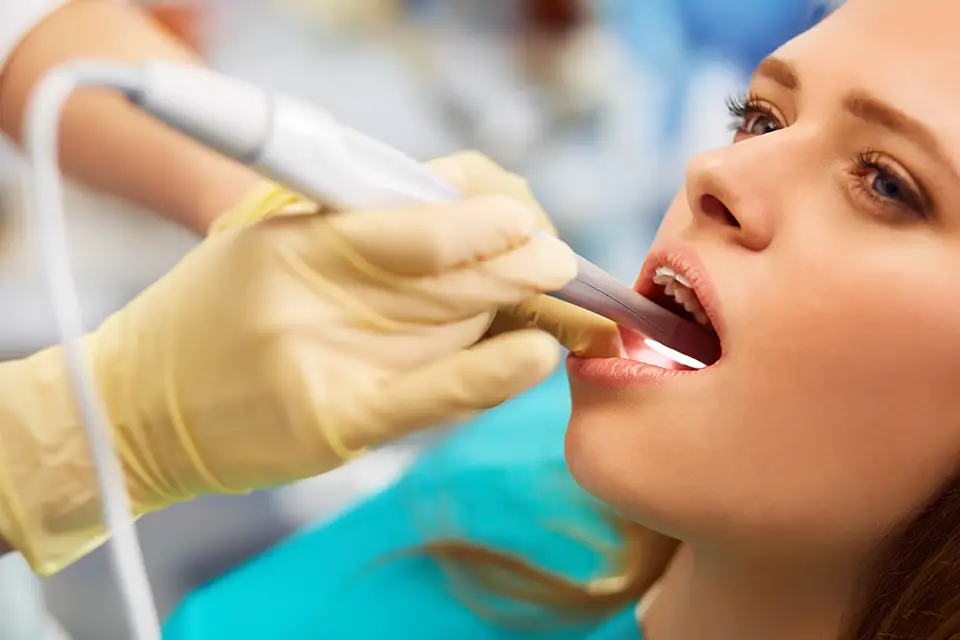A root canal is a dental procedure used to treat and save a tooth that has become infected or badly damaged. Rather than extracting the tooth, a root canal procedure allows dentists to remove the infection while retaining the natural tooth structure. Furthermore, root canals are critical for maintaining oral health and avoiding invasive procedures like tooth extraction and dental implants.
What is a Root Canal?
A root canal procedure involves removing infected or damaged pulp from the inside of a tooth. The pulp is the soft tissue within the tooth, containing nerves, blood vessels, and connective tissues. The pulp is essential during tooth development, but the tooth can survive without it once fully formed. A root canal addresses infections or damage deep within the tooth, shielding the remaining structure from further harm.
Moreover, understanding the anatomy of a tooth helps explain why root canals are necessary. A tooth consists of several layers:
- Enamel: The hard outer layer.
- Dentin: The middle layer, located beneath the enamel.
- Pulp: The innermost layer containing nerves and blood vessels.
A root canal may be necessary when the pulp becomes infected or damaged due to decay, trauma, or cracks. In addition, this procedure prevents additional damage and removes the affected tissue.
When is a Root Canal Necessary?
There are numerous symptoms and causes that may suggest the necessity of a root canal procedure.
There are numerous symptoms and causes that may suggest the necessity of a root canal procedure.
Common Symptoms
- Severe tooth pain: This may be a sharp, throbbing, or constant pain that worsens with chewing or applying pressure.
- Temperature sensitivity: Prolonged sensitivity to hot or cold food and drinks can indicate pulp damage.
- Swelling or tenderness: Swelling in the gums around the affected tooth may indicate an infection.
Reasons for Root Canal
- Infection: Bacteria from tooth decay can reach the pulp, causing infection and inflammation.
- Deep Decay: Cavities penetrating deep into a tooth can cause pulp damage.
- Tooth Injury: Physical trauma can cause a tooth to crack or chip, allowing bacteria to enter the pulp.
Addressing these issues with a root canal is critical to preventing additional damage. Additionally, the infection can spread without treatment, and a tooth extraction may be necessary.
Step-by-Step Guide to the Root Canal Procedure

Step 1: Initial Examination and X-rays
The dentist starts by examining the affected tooth and taking X-rays to determine the severity of the infection or damage. Moreover, the X-ray helps determine how deep the infection has spread and provides a clear view of the root canal system.
Step 2: Local Anesthesia
The dentist administers local anesthesia to numb the area surrounding the tooth to guarantee a pain-free experience. While many patients worry about discomfort during the procedure, the use of anesthesia makes it comfortable and virtually painless.
Step 3: Removing the Infected Pulp
Once the tooth is numb, the dentist creates a small opening in the crown (top) to access the pulp chamber. The dentist carefully removes the infected or damaged pulp from the root canal system using specialized instruments.
Step 4: Disinfecting the Root Canal
After removing the pulp, the dentist cleans and disinfects the root canal to remove bacteria and prevent further infection. In addition, this step is critical to ensure the procedure’s long-term success.
Step 5: Filling the Canal
After thoroughly disinfecting the canal, the dentist will fill it with gutta-percha, a rubber-like material. Moreover, this material seals the root canal, preventing further infection.
Step 6: Placing a Crown or Permanent Filling
The final step is to restore the tooth’s function and appearance by sealing it with a crown or permanent filling. A crown strengthens and protects teeth, particularly those that have experienced significant decay or damage.
Does a Root Canal Hurt?
One of the most frequently asked questions about root canals is whether the procedure is painful. Most patients experience minimal to no discomfort during the procedure due to advancements in anesthesia and dental techniques. Moreover, root canals are frequently performed to alleviate pain caused by an infection. Some mild soreness may happen following the procedure, but this is usually manageable with over-the-counter pain medications.
How Long Does a Root Canal Take?
The complexity of the case and the tooth being treated determine the duration of a root canal procedure. A root canal typically takes one or two visits to complete. Furthermore, the duration of each appointment may vary from 60 to 90 minutes, with additional time required for teeth with multiple roots or extensive infections. Your dentist will review the treatment plan and expected timeline during your initial consultation.
A root canal is an effective way to save a severely damaged or infected tooth, allowing you to keep your natural smile while avoiding more invasive dental procedures. Do not wait to seek treatment if you are experiencing severe tooth pain, sensitivity, or swelling. Furthermore, Zara Dental in Houston, Texas, is dedicated to providing high-quality care in a comfortable setting. Contact us today to schedule a consultation and learn more about how we can help you improve your dental health.








